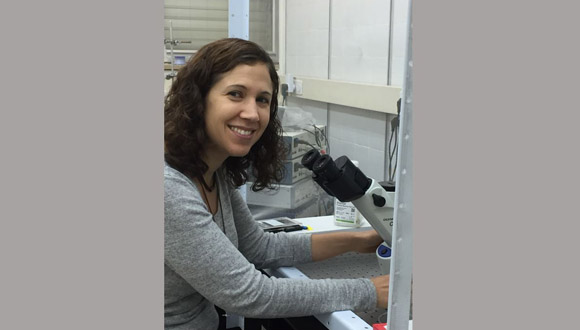
Researchers at Tel Aviv University, among other institutions, have developed an innovative gene therapy that may help children suffering from Dravet syndrome (DS), a severe developmental epilepsy caused by a random mutation in the SCN1A gene during fetal development. DS is characterized by uncontrollable epilepsy, developmental delays, cognitive impairment, and a high risk of early death. The team's innovative gene therapy not only improved epilepsy but also protected against early death and enhanced cognitive abilities in DS lab models.
Breakthrough Gene Therapy
The researchers are hopeful that their genetic therapy can be adapted for other genetic epilepsies and may lead to the development of similar treatments for rare diseases. The study involved injecting a virus carrying a normal SCN1A gene into the brains of DS mice. The treatment demonstrated effectiveness in various critical aspects, even after the onset of severe epilepsy. The researchers express optimism that their laboratory technique will eventually reach clinical settings and provide help to children wit this debilitating disease. They also believe that the tools developed during this research will pave the way for similar treatments for other rare diseases.
The study was led by Dr. Moran Rubinstein and graduate student Saja Fadila, along with Anat Mavashov, Marina Brusel and Karen Anderson, all from the Sackler Faculty of Medicine and the Sagol School of Neuroscience at Tel Aviv University, and Dr. Eric Kremer, from the University of Montpellier in France. Also participating in the study were Bertrand Beucher and Iria González-Dopeso Reyes from Montpellier and other researchers from France, the USA and Spain. The research was published in the Journal of Clinical Investigation.

Dr. Moran Rubinstein
Dravet syndrome affects approximately one in 16,000 births and is considered relatively common among rare genetic diseases. Currently, there are around 70 affected children in Israel. The syndrome presents as thermally-induced seizures around six months of age, with progress to frequent spontaneous epileptic seizures and motor and cognitive developmental delays after one year.
Dr. Rubinstein highlights that existing epilepsy drugs are insufficient for children with DS, who face a significant risk of early death. The syndrome results from a genetic mutation that occurs randomly during fetal development in a gene called SCN1A and is not inherited from the parents. Unfortunately, the disease cannot be predicted or discovered during pregnancy, making early diagnosis challenging.
According to the researchers, it is customary nowadays to perform a genetic analysis for children who suffer from complex thermally-induced seizures around the age of six months. However, even if the test detects that the problem is in the SCN1A gene, the final diagnosis is often given after the epilepsy worsens, with the appearance of severe spontaneous convulsions and developmental delays. Although it is important to have an early diagnosis, diagnosis is often delayed, and most children are diagnosed only at the age of one or two years and sometimes even later.
Promising Results in Lab Models
Although genetic therapies have shown promise in DS mice and some of them are undergoing clinical trials in humans, they have only been effective when administered at very early stages, prior to symptom onset. Given the complex and invasive nature of gene therapy, it cannot be administered without a confirmed diagnosis of DS. Hence, the researchers focused on developing a treatment that could be effective after seizure onset, even at a relatively late age. Additionally, since DS involves cognitive impairments, the team aimed to alleviate both epilepsy and cognitive symptoms.
Dr. Rubinstein explains that viruses are commony used as carriers in genetic therapies to introduce normal genetic material into patients, enabling normal cellular function. For this purpose, the virus is engineered: its original genetic material is removed so it cannot cause disease or replicate itself, and instead, the relevant normal gene is packed inside. In the case of Dravet syndrome, since the SCN1A gene is very large, it was not possible to use common viruses that are usually used for this purpose and a virus capable of carrying and transferring large genes was needed. The team solved this problem by using a virus called Canine adeno virus type 2, as a carrier of the normal gene.
The carrier virus was directly injected into the brains of DS mice since its properties prevent it from crossing the blood-brain barrier. The treatment was administered to 31 mice at three weeks of age, after spontaneous convulsions had commenced (equivalent to one to two years of age in children), and to 13 mice at five weeks of age (equivalent to approximately six to eight years of age in children). The injection was performed in multiple brain areas, while an empty virus was injected into the brains of 48 control mice.
Potential for Rare Diseases
Promising results followed, with the highest efficacy observed when the treatment was administered at three weeks of age. In these mice, seizures ceased entirely within 60 hours of injection, life expectancy significantly increased, and cognitive impairment, assessed through spatial memory tests, was completely restored. Even in mice treated at five weeks of age, there was notable improvement, characterized by reduced epileptic activity and protection against thermally-induced seizures. In the control group that received the empty virus, no improvement was observed, and the mice experienced symptoms akin to untreated mice, with approximately 50% succumbing to early death due to severe epilepsy. The treatment was also applied to healthy mice without any adverse effects, demonstrating its safety.
The researchers clarify that their treatment restored normal function to damaged neurons in the brain by introducing a complete, normal gene. This approach is crucial in treating Dravet syndrome since the mutation can occur at different locations within the gene, and administering a complete gene provides a univform treatment suitable for all DS patients. Furthermore, the chosen virus infected numerous nerve cells and spread widely beyond the injection site, enhancing its effectiveness.
Dr. Rubinstein concludes that their treatment is the first proven to be effective for Dravet syndrome after the onset of spontaneous convulsions, offering improvement in cognitive function for DS mice. The team has already registered a patent, and hopes to see the treatment reach clinical settings to benefit children affected by this debilitating disease. They are also exploring its potential applicability to other genetic neurodevelopmental diseases. The developed platform represents a plug-and-play system for genetic therapies, with the possibility of incorporating different types of normal genetic material into the carrier virus for treating additional diseases in the future.






